Translated from original entry 27-08-2014
About the Dachsteinseilbahn, near to Obertraun and Hallstatt in Salzkammergut, Austria.
Short introduction:
The first and second section of aerial tramway system to the Krippenstein mountain was handed over to the general public in 1951 and 1956, respectively. The base height of valley station not far from the settlement Obertraun is 609 meters, the second terminal is at 2100 meters height. The mountaintop offers a grandiose view to the Hallstatt-Lake and the peaks of Dachstein. At the end of the first section can be found the Dachstein Ice cave (Dachstein-Rieseneishöhle) and the gigantic Dachstein Mammut Cave captivating UNESCO World Heritage. Another lift has been built from the Krippenstein peak, 300 meters down to Gjaidalm in 1961. This became eventually the third section of the aerial tramway system. The first two sections were refurbished in 2007. Above the terminus of Gjaidalm, a military training camp of Austrian Bundesheer at Oberfeld (1835 m) was set up in the 1930s. Ropeways was installed unto this facility at the end of the fifties, which also started from Obertraun. The cable car was only used by military personnel, it was not allowed for tourists. The camp had been used by the Austrian Federal Army until 2009 and it is currently empty. According to Local newspapers it has been bought by private entrepreneur for tourism purposes.
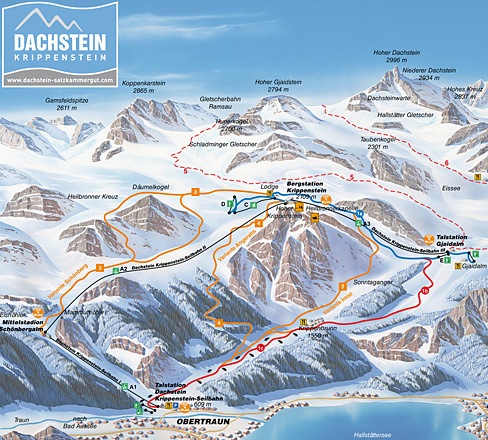
Near the center of the map can be found Krippenstein, on the right side Gjaidalm. Above these areas, peaks of Dachstein are located. Close to the ski slope which is indicated with red line on the graphic, is situated the trace of military cable car. As it did not function as public means of transport, not seen on the ski map at all. (Source of map: www.sielok.hu)
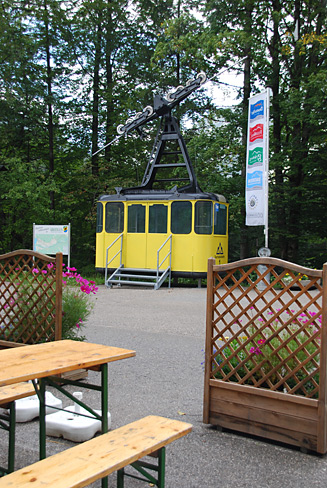
At the valley station one of the former cabins has been exhibited. There is a stairway to it and a bench in it, but entering was impossible, because it was closed down. Telling the truth, I had been in it several times when it was in function. In vain, time is running..
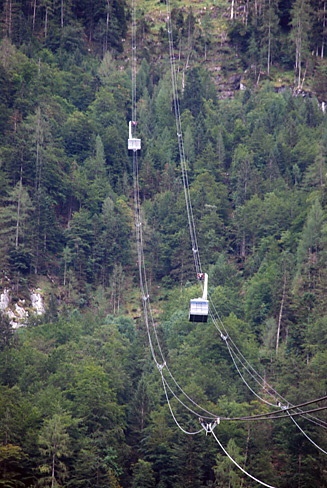
The successors: recent cab-pair of the lower section underway. The lift system has double stationary cables, on which roller gears of cabins are running along. The triangular structures which are mounted on these support ropes are responsible for the cables being spaced apart, for example in the case of heavy cross-winds.
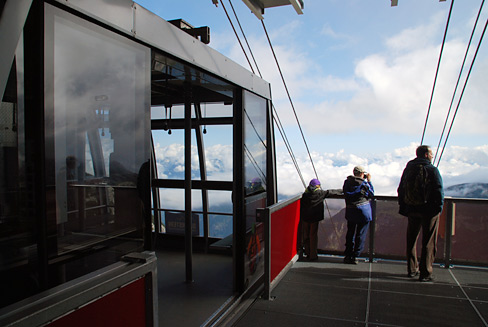
Krippenstein, mountain station. After a brief photo shooting we had to leave the platform to give it over the passengers travelling downhill. The cable car system was totally renewed, among others with bigger capacity cabins, but the building has remained the original, that is why the platform, seen on right-bottom side of the picture, slips toward left or right, depending on which cabin arrives.
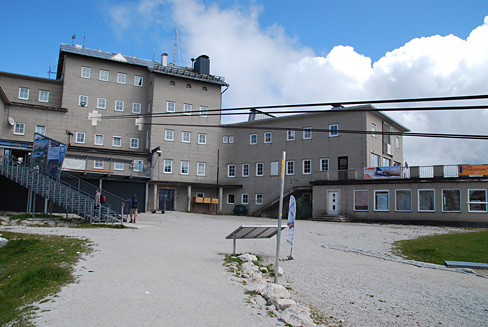
The same mountain station as on former image. The cables which led from the building are the cable car's stationary supporting ropes..
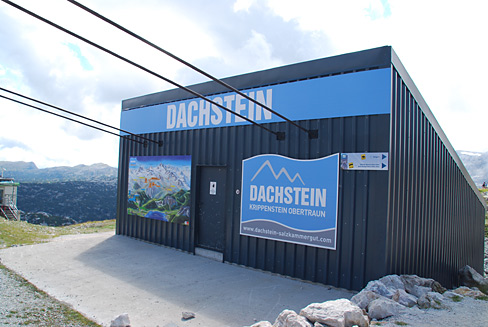
.. are robustly anchored inside this building.
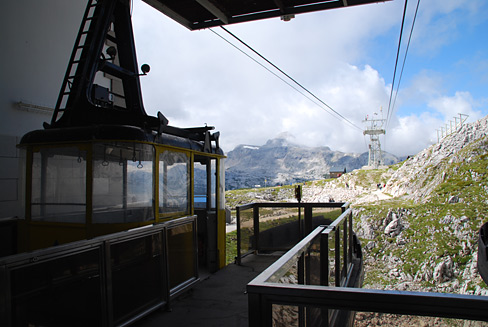
The third section, starting from top of Krippenstein, is the only one which has not been refurbished yet. In the background are the peaks of Dachstein mountain.
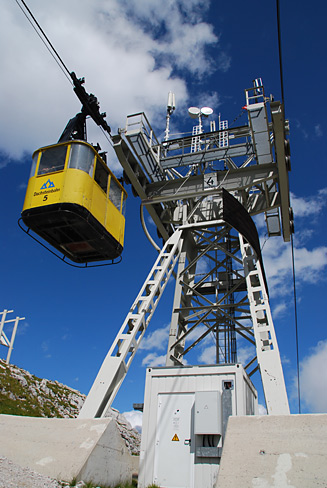
Aeral lift pylon, which was on the former picture as well.
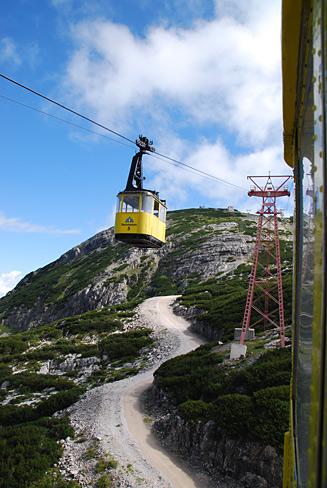
Along the way, peeping from the cabin window. This old cable car is characterized by a proper kind of nostalgic atmosphere: the rattling windows, the riveted sliding door closable with tube key, the operator who stares at the landscape underway through the pulled down and drafty window. Technique of the new lifts is naturally fascinating, but these old structures are somehow closer to my soul.

And what is he (i.e. the operator) watching throughout the journey? For example the Lake Hallstatt.
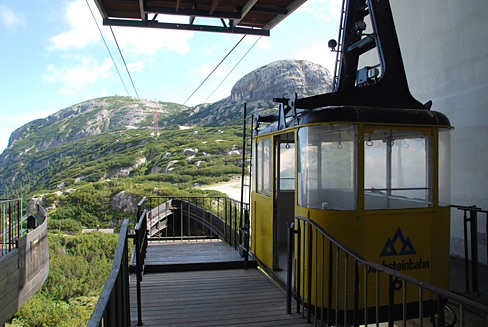
We have arrived to Gjaidalm. On the opposite side is Krippenstein.
Above Gjaidalm is the abandoned military training camp of Oberfeld. Behind it the rocky Dachstein situated. From the barrack to the right, the smaller building is the mountain station of the military cable car.
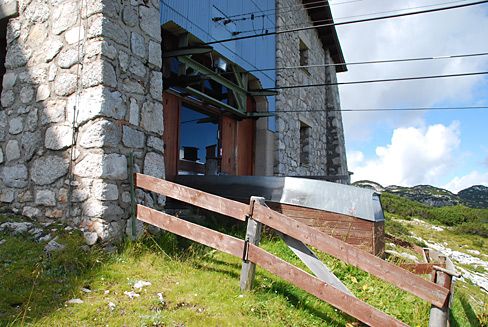
The terminal of military cable car, close up. The wooden doors are closed, the place for loading and unloading was inside the building. In the camp building, incidentally, there were one or two workers. One of they opened the window inquiringly. I said eftsoon that I would take only one or two photographs. He closed the window with saying a "passt schon" (that means 'OK' here).
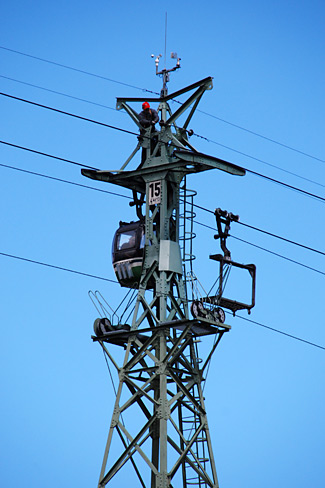
Shortly afterwards, a group-lift appeared on the ropeway, shown above in the picture. One of the mechanics sprang out the cabin, climbed up the supporting pylon and started to cut the uppermost cable with a disc grinder. Certainly, that rope did not participate in the operation of the lift system. During the action, a colleague with a quad-vehicle supervised the area from below, because a falling cable might have cut off something or somebody.
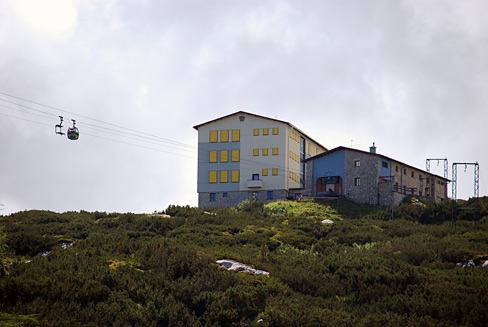
They repeated that kind of operation by several supporting pylons before went back to the valley. By the looks of things, preparations of the demolition of the military cable car has begun.
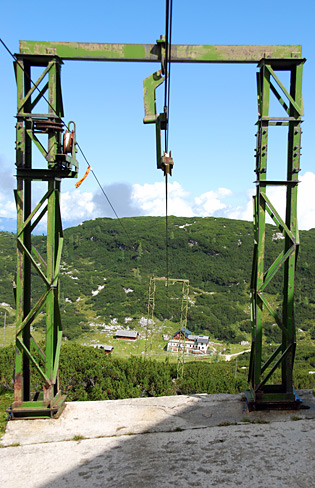
A cargo lift was built between the barracks and the Gjaidalm Hütte too. It seems it had been used a great while ago.



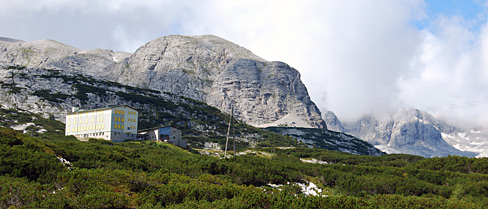
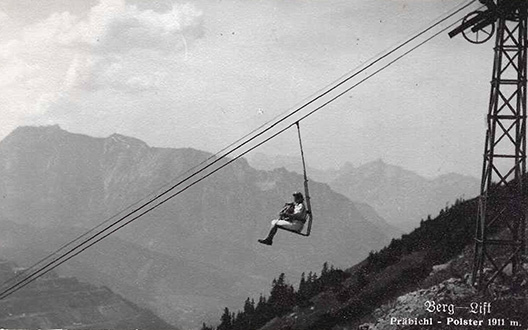

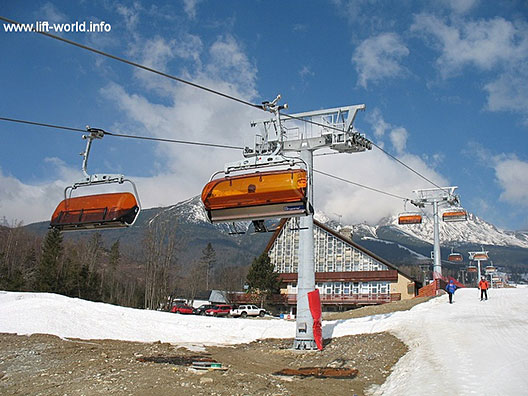
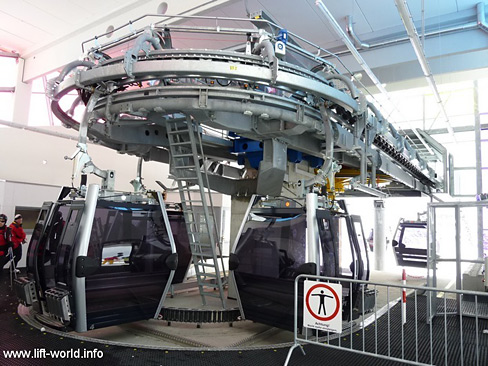
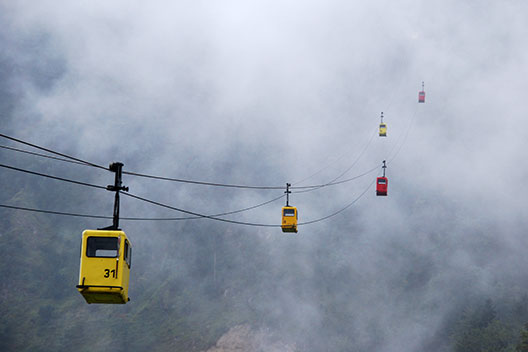
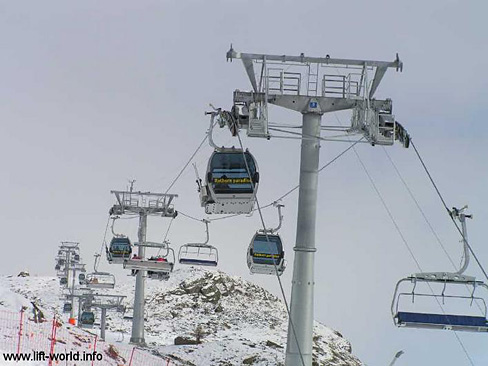
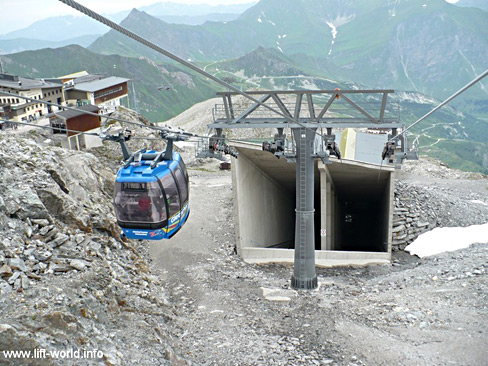
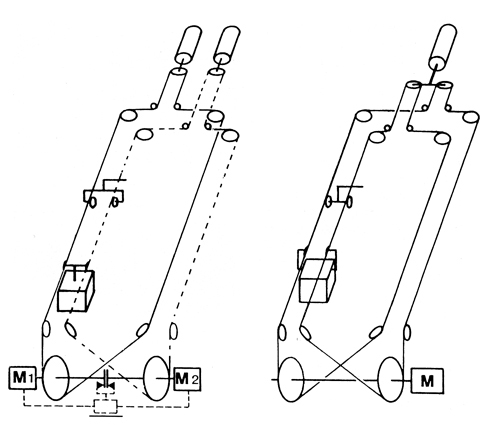
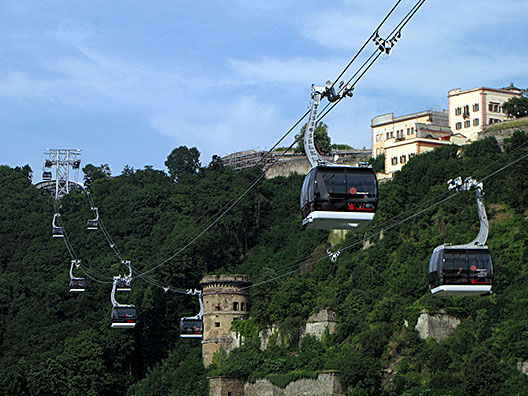
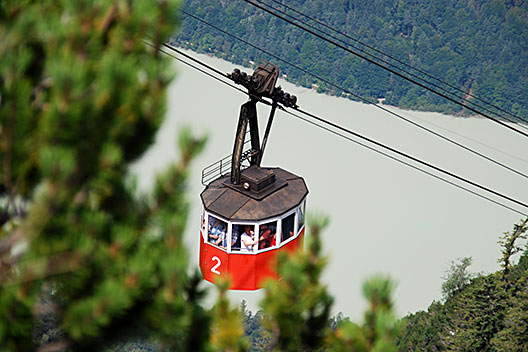

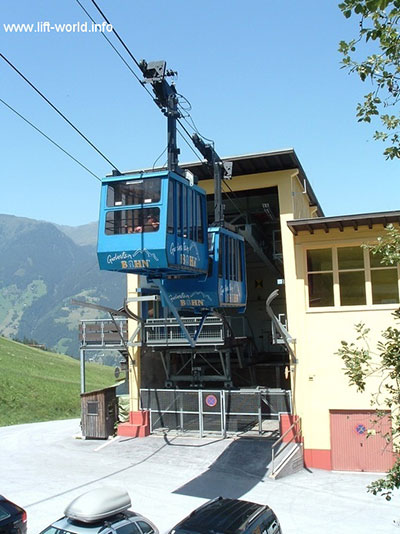
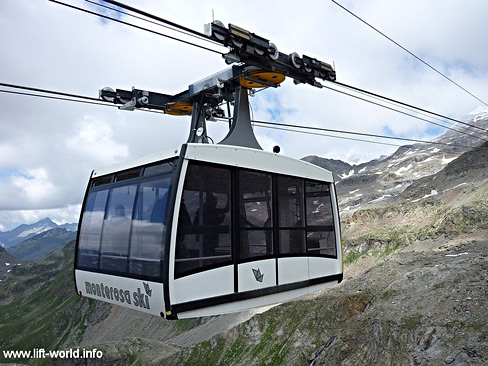
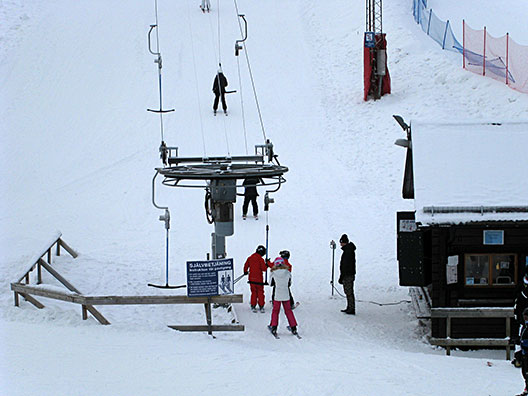
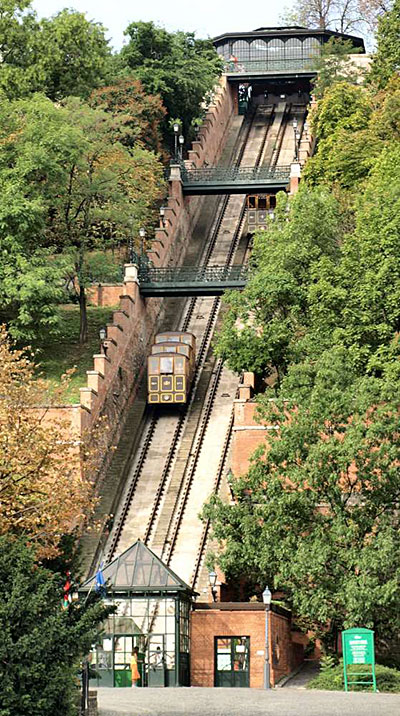
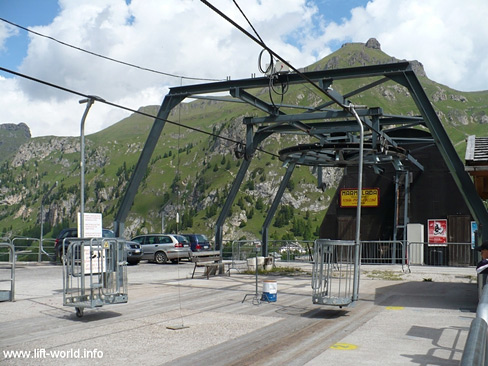
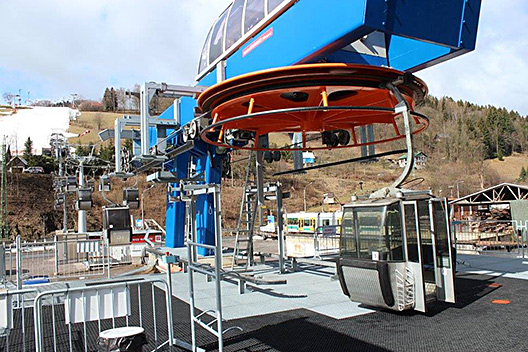
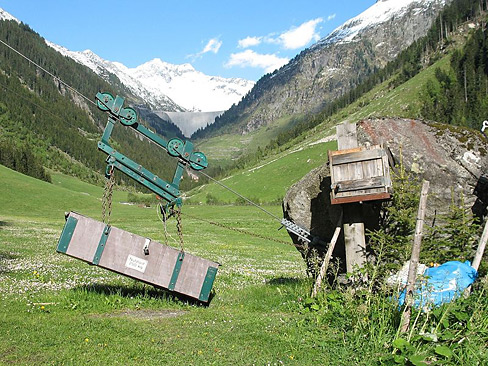
Címkék: Dachstein Salzkammergut Austria summer travelogue Obertraun aerial tramway